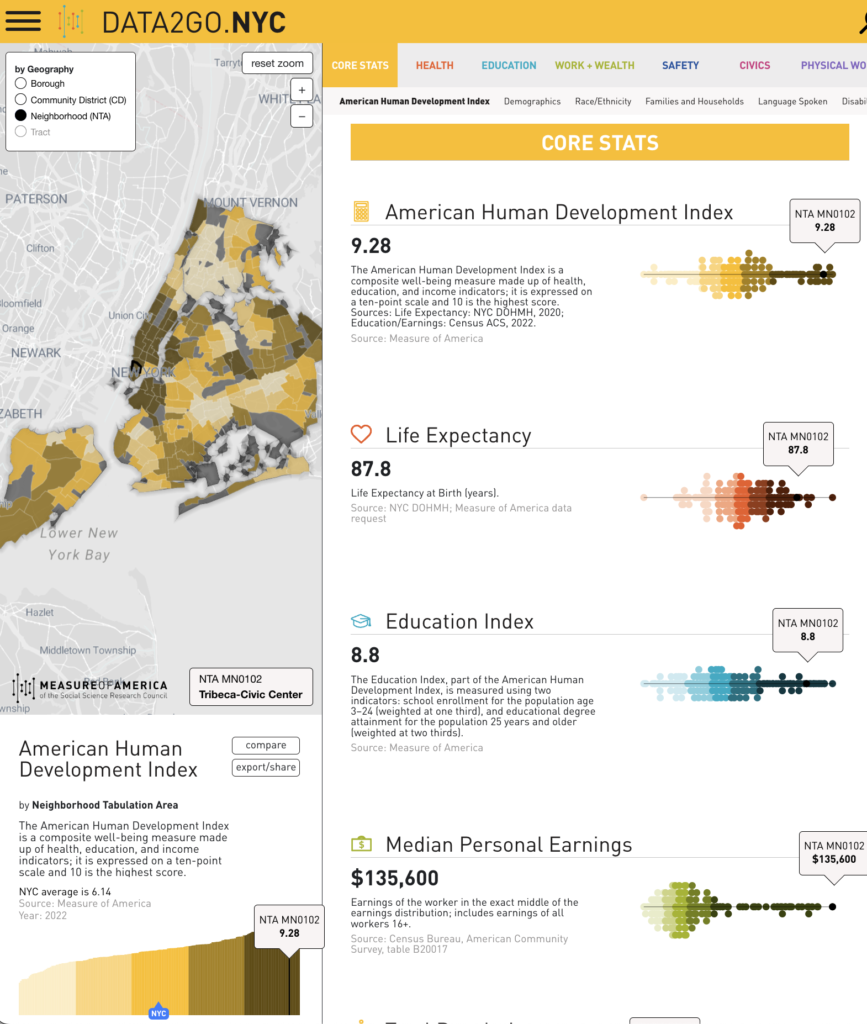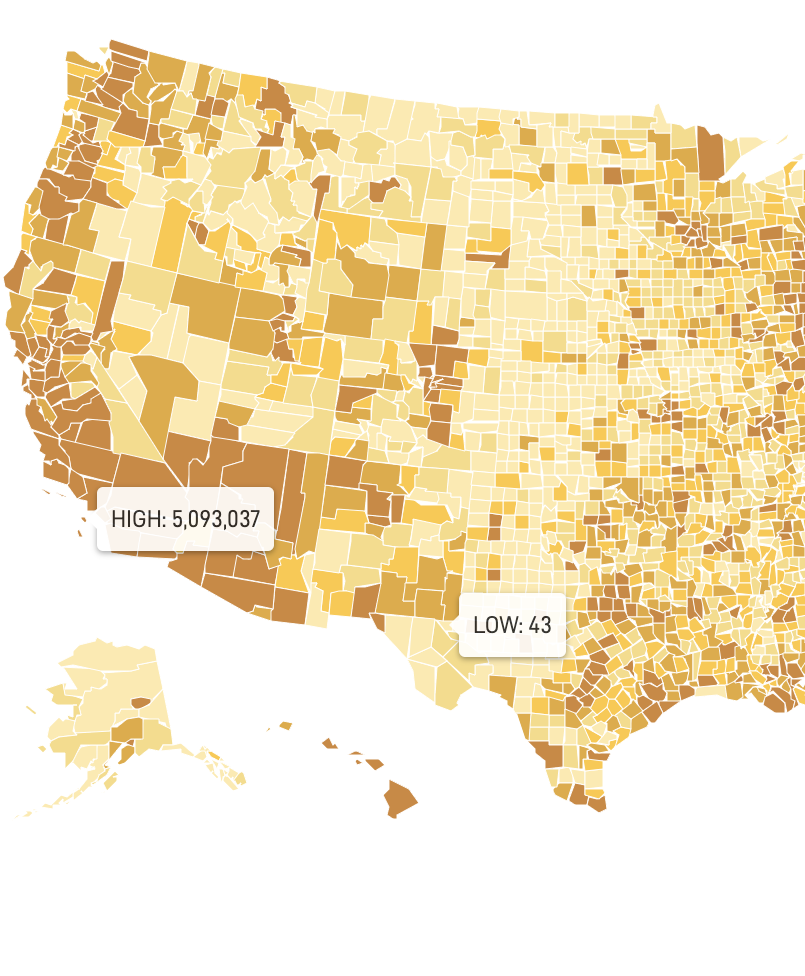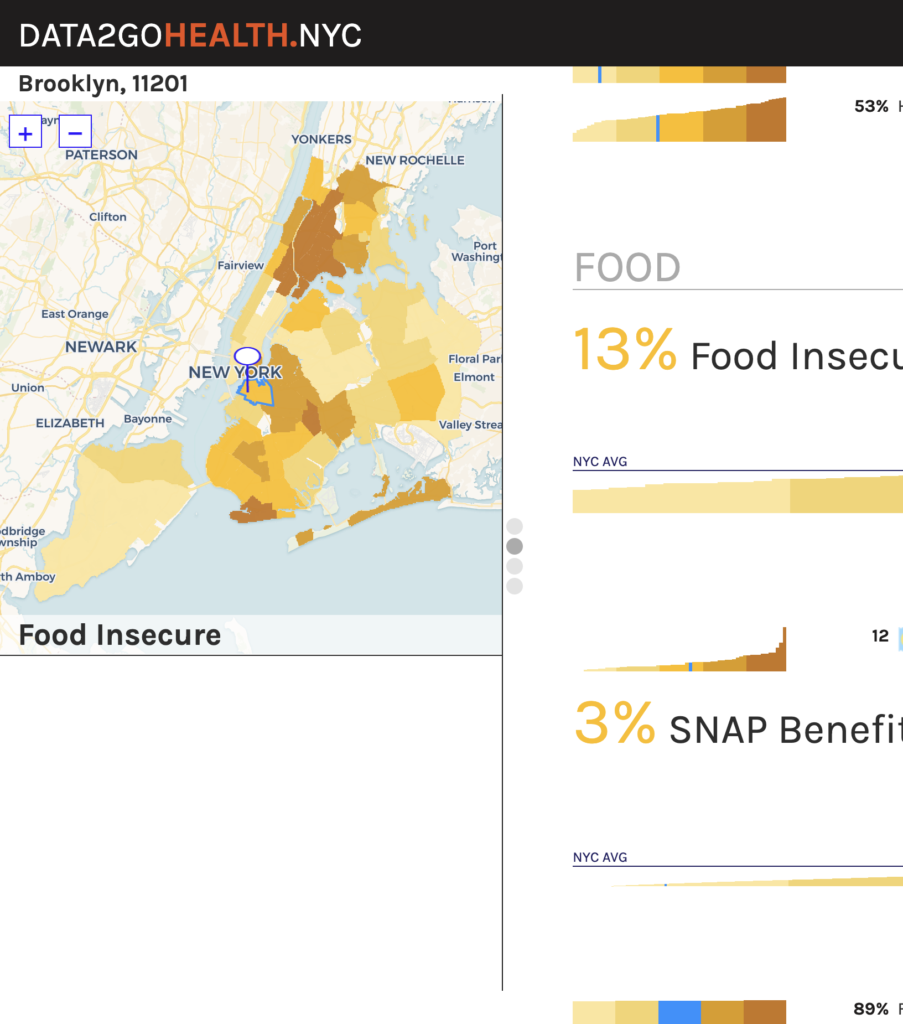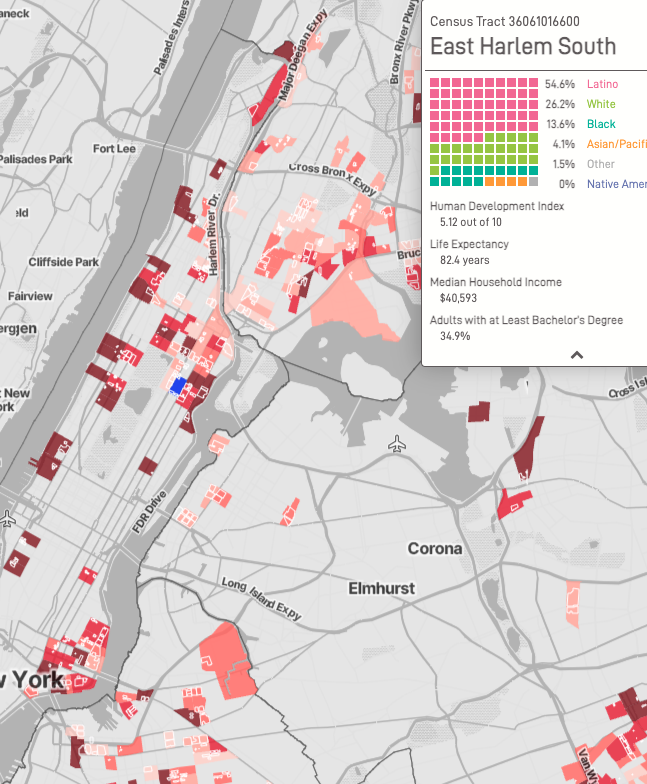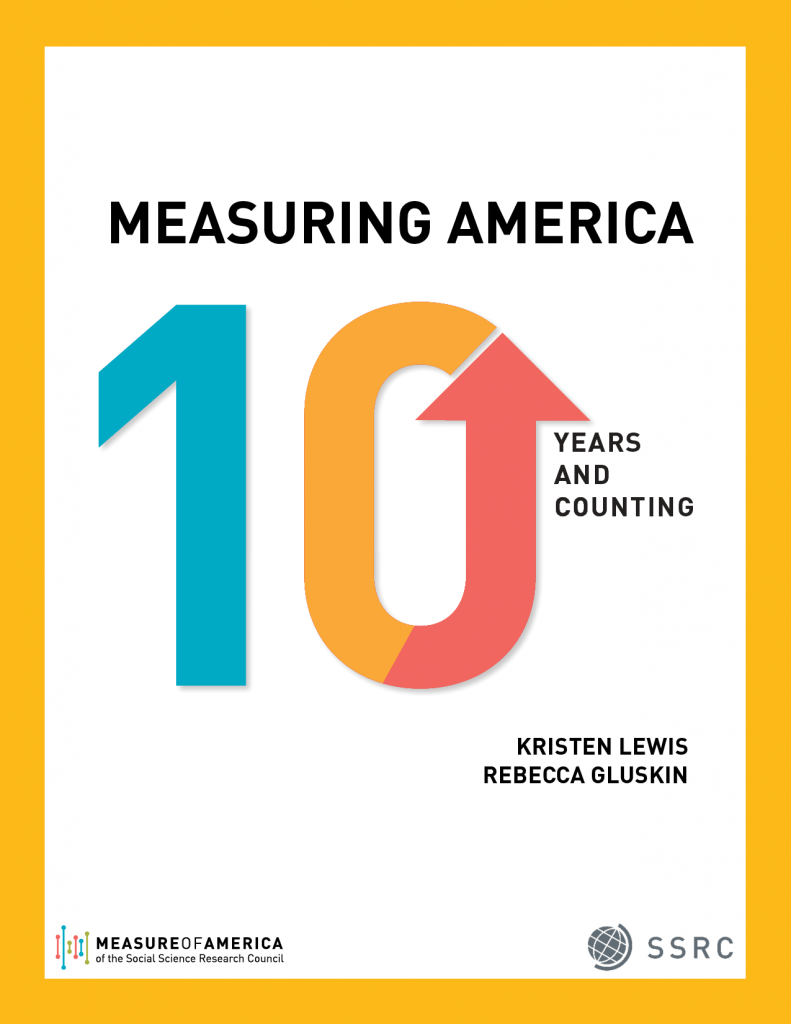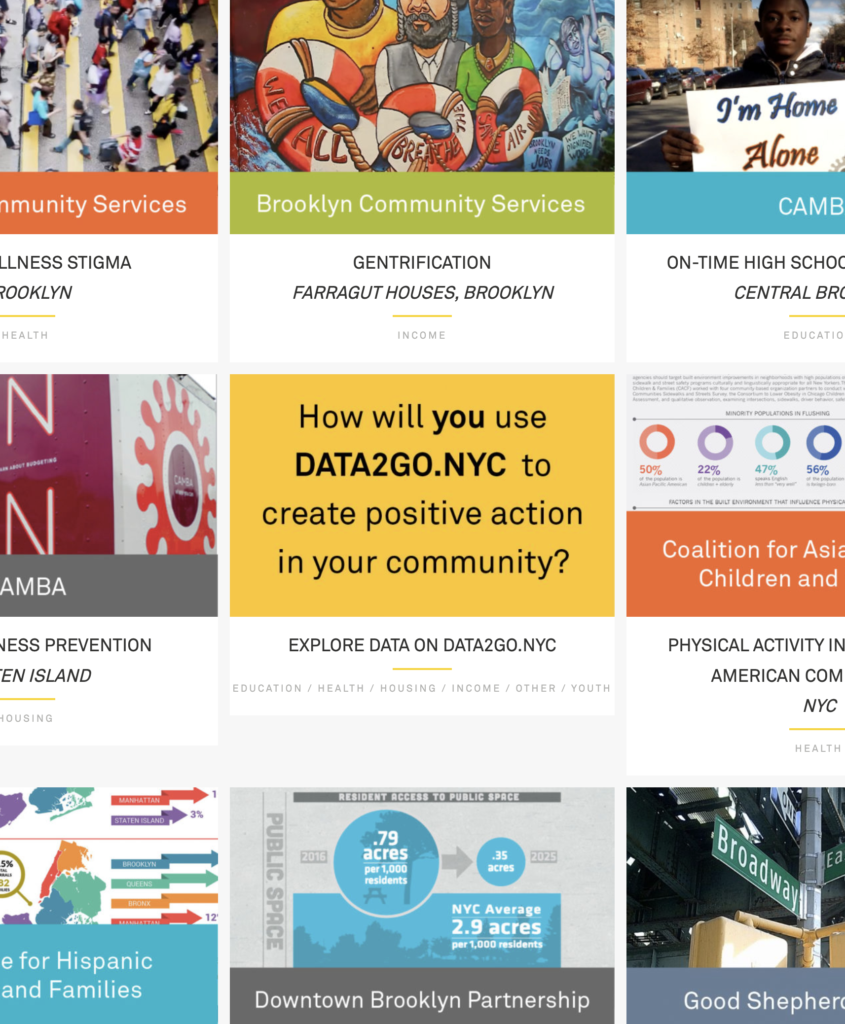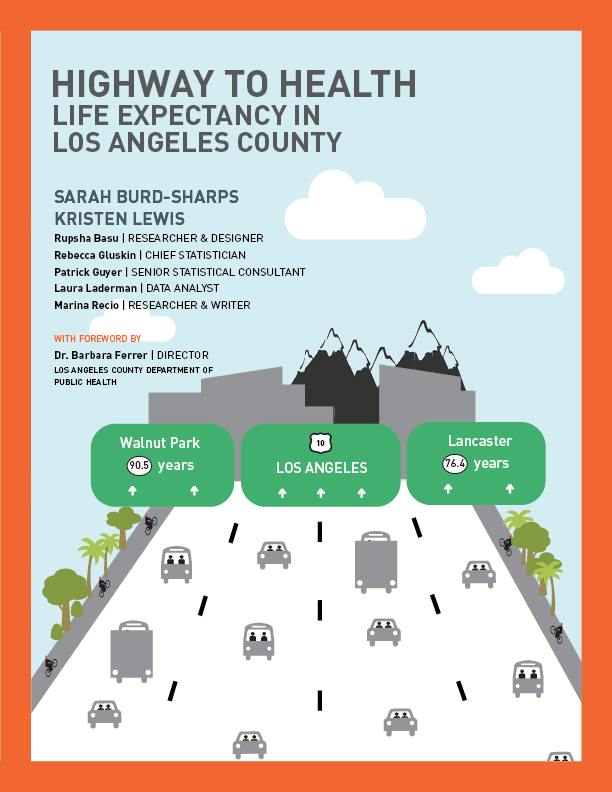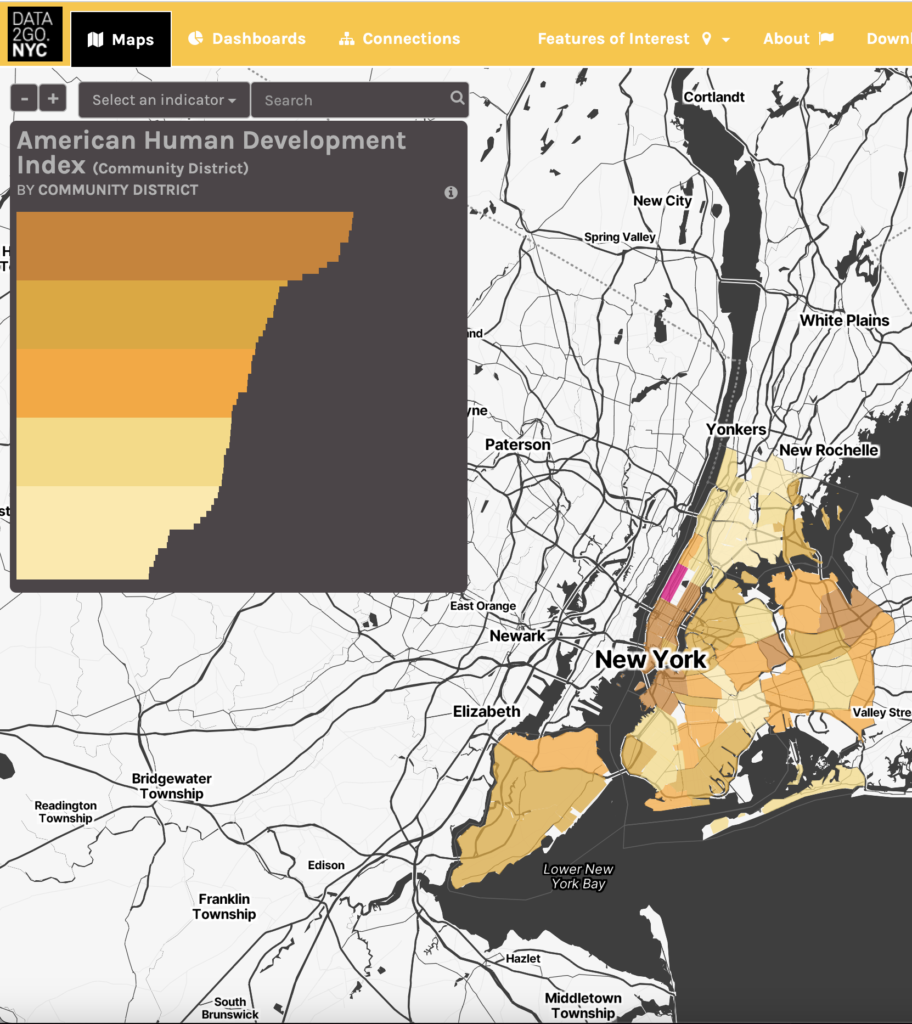Our Work
DATA2GO.NYC
Data Tool | April 30, 2025DATA2GO.NYC is a free, interactive tool that lets you explore over 400 indicators related to human well-being and inequality across New York City's nearly 200 neighborhoods.
Mapping America Tool
Data Tool | June 17, 2021With over 100 indicators, Mapping America allows users to explore data like they never have before. Users can plug in their zip codes to locate human development levels within their own communities, compare places and indicators, and more.
DATA2GOHEALTH.NYC
Data Tool | November 15, 2018DATA2GOHEALTH.NYC builds on DATA2GO.NYC, its sister tool, and provides reliable, up-to-date information on neighborhood assets and challenges across a broader range of health sectors.
OurHome.NYC
Data Tool | February 12, 2020OurHome.NYC is a free, easy-to-use online mapping and data tool that depicts the relationship between health, as measured by life expectancy, and housing across more than 300 New York City Housing Authority (NYCHA) developments.
Measuring America: 10 Years and Counting
Report | December 14, 2018“Measuring America: 10 Years and Counting” explores trends in American Human Development Index scores over the past decade by race and ethnicity, gender, and U.S. state, revealing the uneven nature of America’s rebound from the 2007 financial crisis.
NYC Community Portraits
Short Read | June 21, 2018This site features the community portraits created by nearly 20 NYC-based human services organizations to illuminate important well-being challenges and unmet human needs in their neighborhoods or fields using the indicators found in DATA2GO.NYC.
Highway to Health
Report | October 4, 2017Highway to Health: Life Expectancy in Los Angeles County reveals up-to-date life expectancy calculations for cities and unincorporated areas within Los Angeles County, the first release of such data in more than a decade.
Measure of America at the Smithsonian
Short Read | September 30, 2017Measure of America work was featured in the Cooper Hewitt, Smithsonian Design Museum's third exhibition in a series about socially responsible design, "By the People: Designing a Better America."
DATA2GO.NYC
Data Tool | October 28, 2015Data2Go.NYC allows users to visualize where people in need are, what resources are available to assist them, where gaps exist, and how different factors interact to shape the choices and opportunities available to them.
